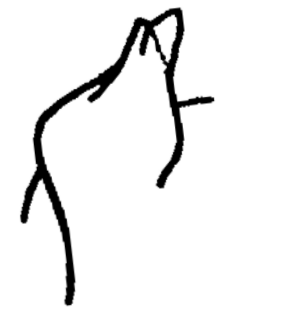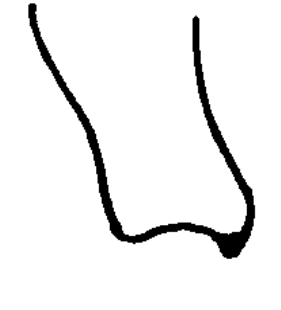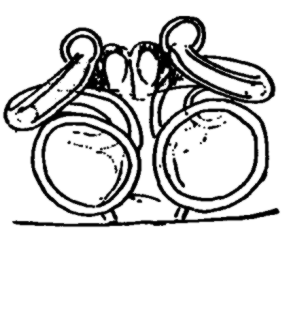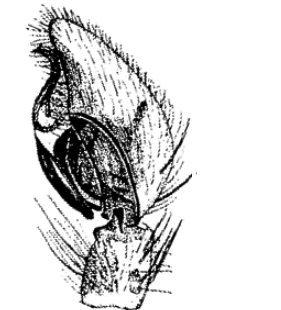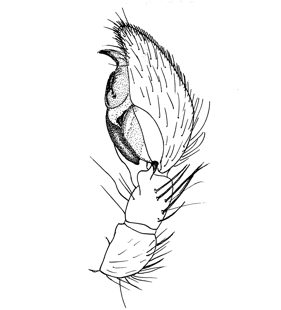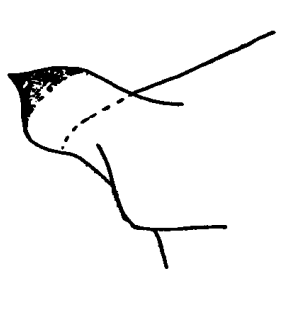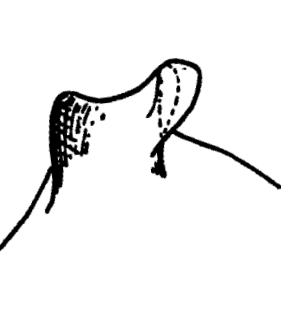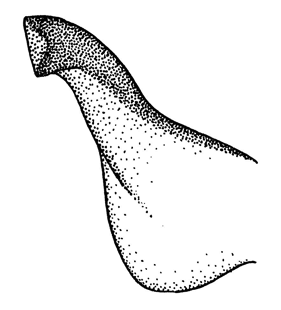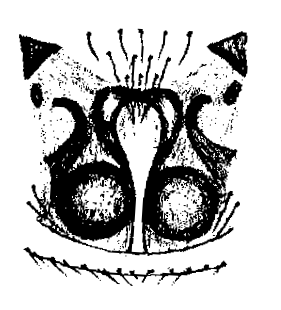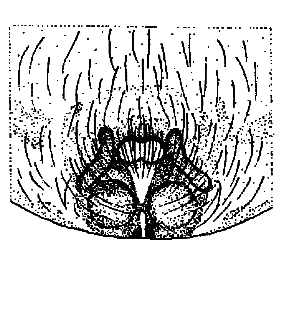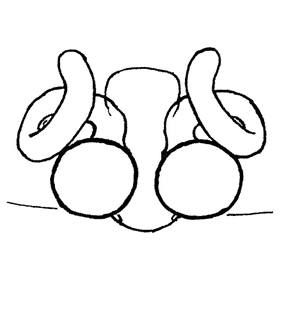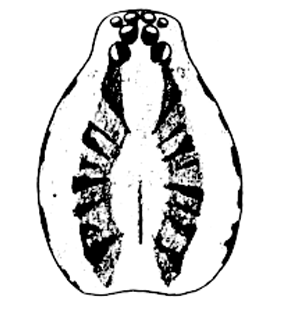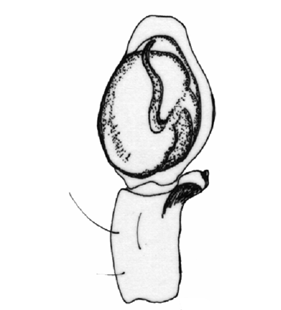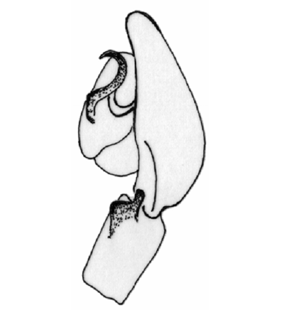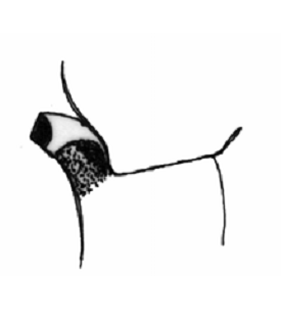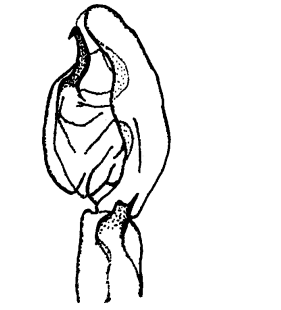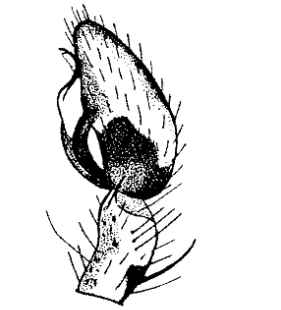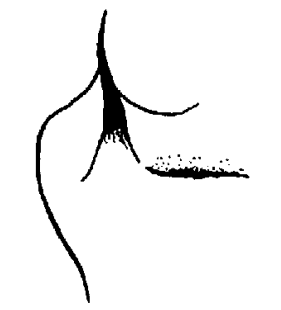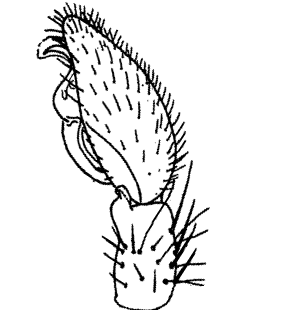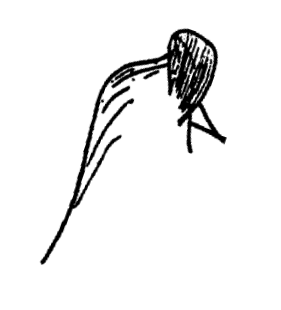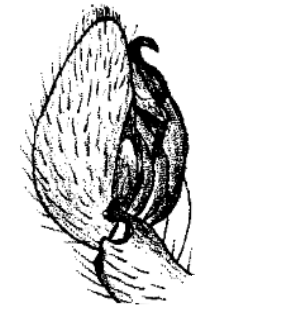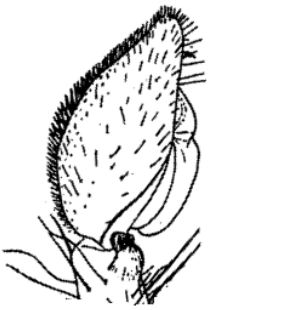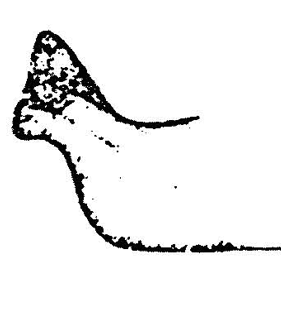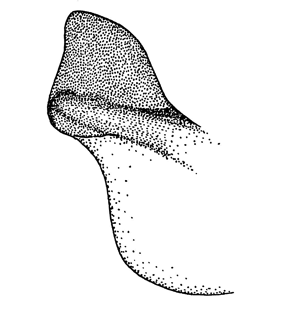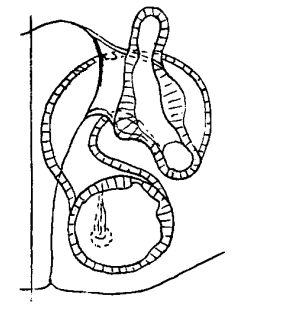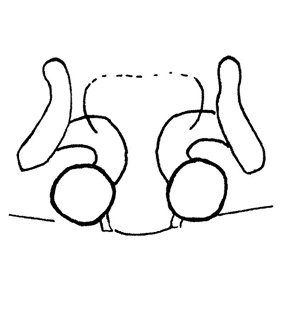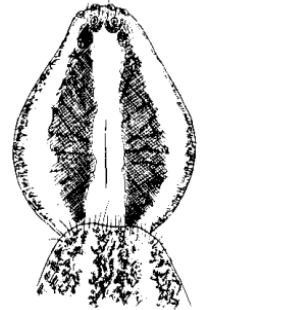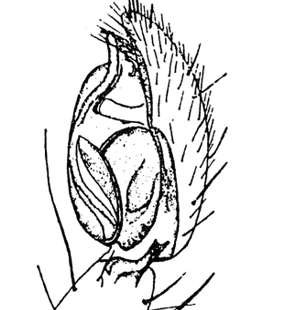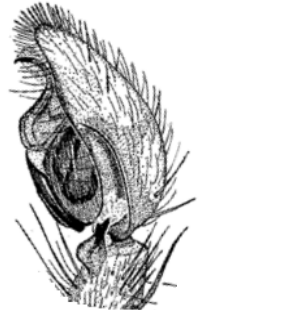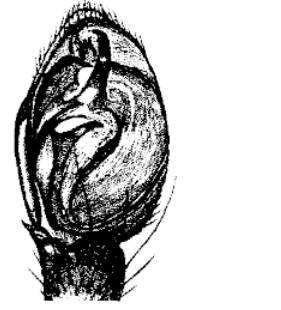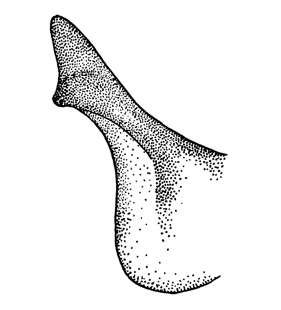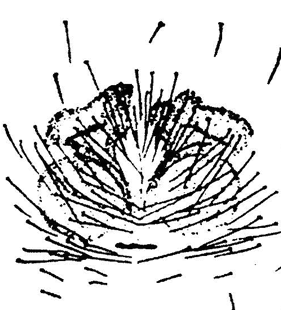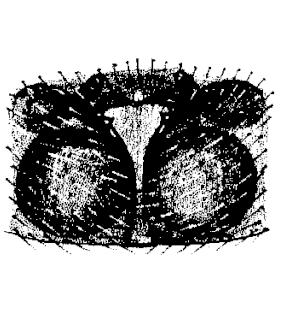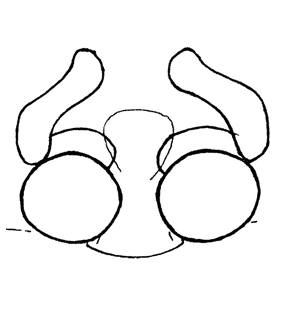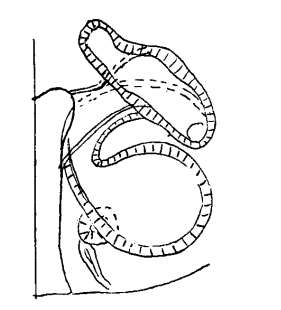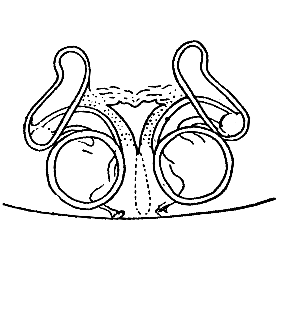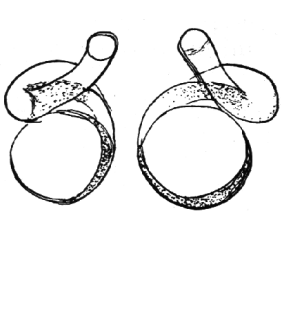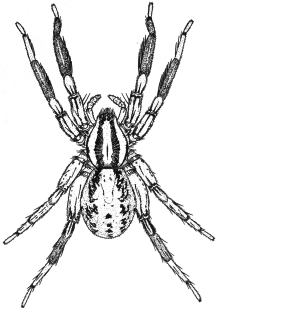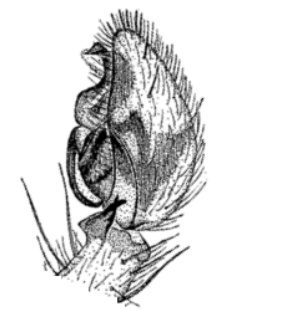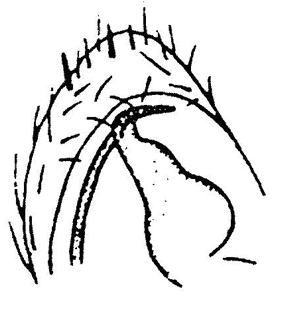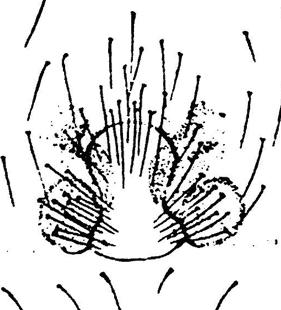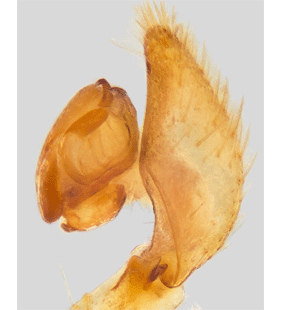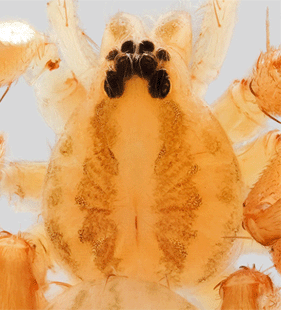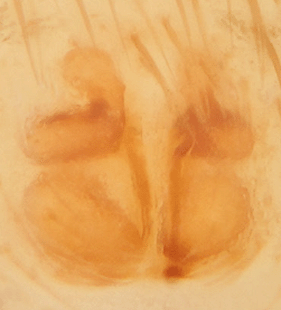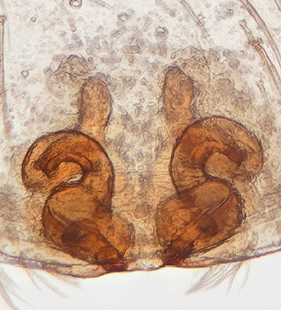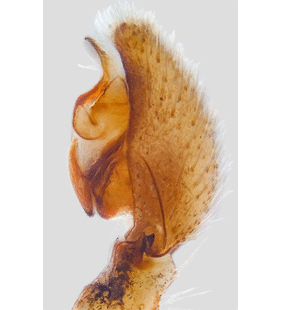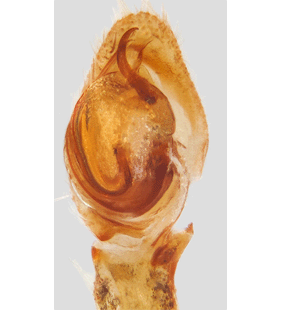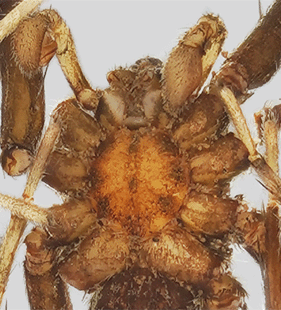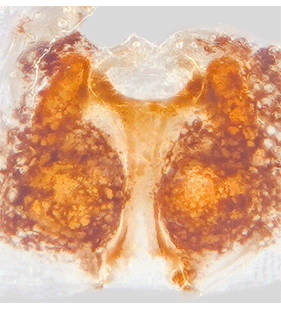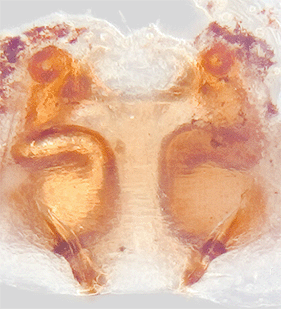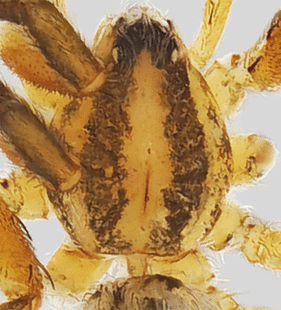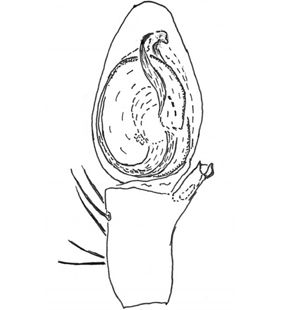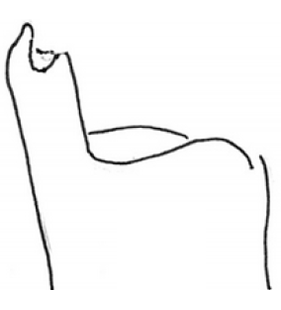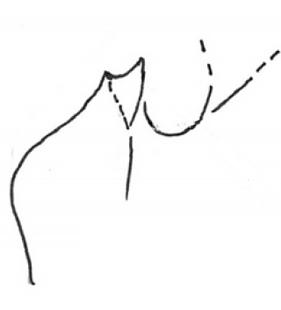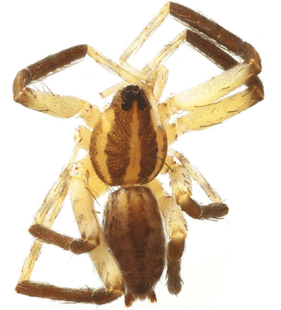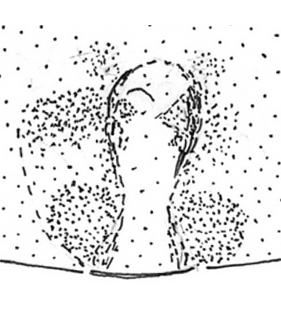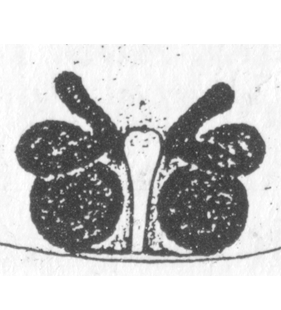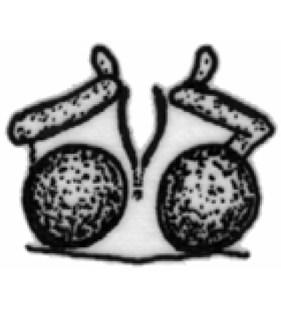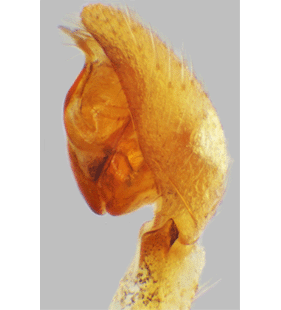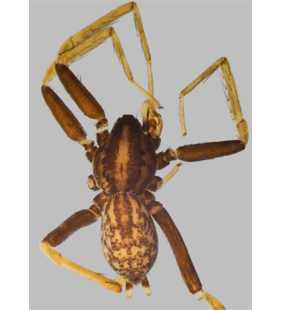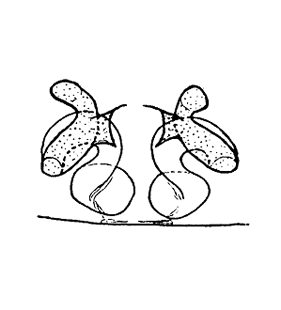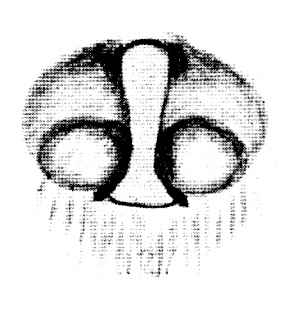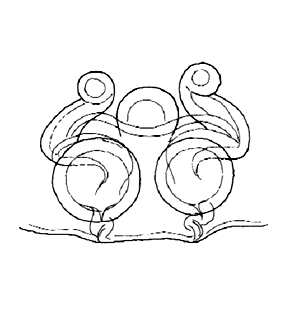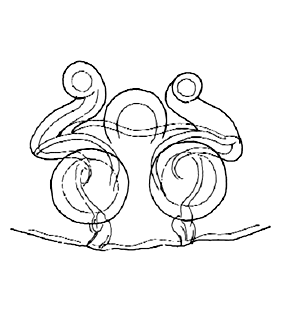Miturgidae: Zora C. L. Koch, 1847
Key not complete! Further species listed at the end of key |
In case you find an error or have a specific suggestion, please follow this link: click
|
|||||||
| 1 |
Metatarsus I and II ventrally with 2 pairs of bristles | |||||||
| - | Metatarsus I and II ventrally with 3 pairs of bristles | |||||||
| 2 (1) |
Dark median longitudinal bands of prosoma distinctly broader than the lateral nearby light longitudinal bands; dark marginal band very broad; tibia of male pedipalp as fig.; epigyne with very small groove Zora manicata Simon, 1878 |
| ||||||
| - | Dark median longitudinal bands of prosoma ± as broad as the nearby lateral light longitudinal bands; dark marginal band narrow | |||||||
| 3 (2) |
Dark marginal band of prosoma distinct and continuous; femur I and II dorsally and /or laterally with mostly distinct dark grey longitudinal stripes or rows of spots; tibia of male pedipalp as fig.; epigyne with moderately large groove Zora silvestris Kulczyński, 1897 |
|||||||
| - | Dark marginal band of prosoma very narrow and interrupted; femur I and II without or with very indistinct spots; epigyne with very large groove Zora alpina Kulczyński, 1915 |
| ||||||
| 4 (1) |
Femur yellow-brown, with numerous dark grey spots; dark marginal band of prosoma mostly doubled, the inner one interrupted; epigyne with small groove Zora pardalis Simon, 1878 |
| ||||||
| - | Femur mostly uniformly yellow, without distinct darker spots, sometimes with dark brown longitudinal stripes; only one dark marginal band or lacking | |||||||
| 5 (4) |
Opisthosoma dorsally with 3 distinctly dark, continuous longitudinal band on light background; male pedipalp with tibial apophysis as fig.; epigyne with small groove Zora parallela Simon, 1878 |
|||||||
| - | Opisthosoma dorsally yellow-brown, mostly with dark spots; if median longitudinal band is present, then longitudinally brightened | |||||||
| 6 (5) |
Opisthosoma ventrally and laterally middle to dark brown, in distinct contrast to much lighter dorsal side; prosoma without dark marginal band (pigment spots of coxal margins visible through prosoma can pretend a discontinuous band, clearly separated from margin); tibial apophysis as fig.; epigyne with small groove and strongly pigmented Zora distincta Kulczyński, 1915 |
| ||||||
| - | Opisthosoma dorsally not lighter than ventrally; prosoma with distinct dark marginal band | |||||||
| 7 (6) |
Femur III dorsally with 5 bristles; patella of male pedipalp distinctly broadened; epigynal groove distinctly larger than receptaculum seminis; dark median longitudinal bands of prosoma distinctly broader than nearby light lateral longitudinal bands; basic colour of opisthosoma light to middle brown, dark spots mostly indistinct Zora nemoralis (Blackwall, 1861) |
|||||||
| - | Femur III dorsally with 7-9 bristles; patella of male pedipalp not broadened; epigynal groove not considerably larger than receptaculum seminis; dark median longitudinal bands of prosoma mostly narrower than nearby light lateral bands; dark marginal band narrower than the nearby light longitudinal bands; basic colour of opisthosoma bright, with distinct dark brown spots | |||||||
| 8 (7) |
Femur I and II with dark brown longitudinal stripes; male coxa IV densely covered with short, thick hairs; retinaculum as fig.; epigyne with small groove and larger receptacula seminis Zora spinimana (Sundevall, 1833) |
|||||||
| - | Femur I and II yellow-brown; male coxa IV scarcely covered with long, thin hairs; retinaculum as fig.; epigyne with large groove and small receptacula seminis Zora armillata Simon, 1878 |
Further taxa
1. Zora alexeevi Ponomarev, Mikhailov & Shmatko, 2024 | ||||||||
2. Zora caucasia Ponomarev, Mikhailov & Shmatko, 2024 | ||||||||
3. Zora dagestana Ponomarev, Mikhailov & Shmatko, 2024 |
| |||||||
4. Zora manicatoides Wunderlich, 2023 | ||||||||
5. Zora osetica Ponomarev, 2021 |
| |||||||
6. Zora palmgreni Holm, 1945 |
| |||||||
7. Zora prespaensis Drensky, 1929 |
|


